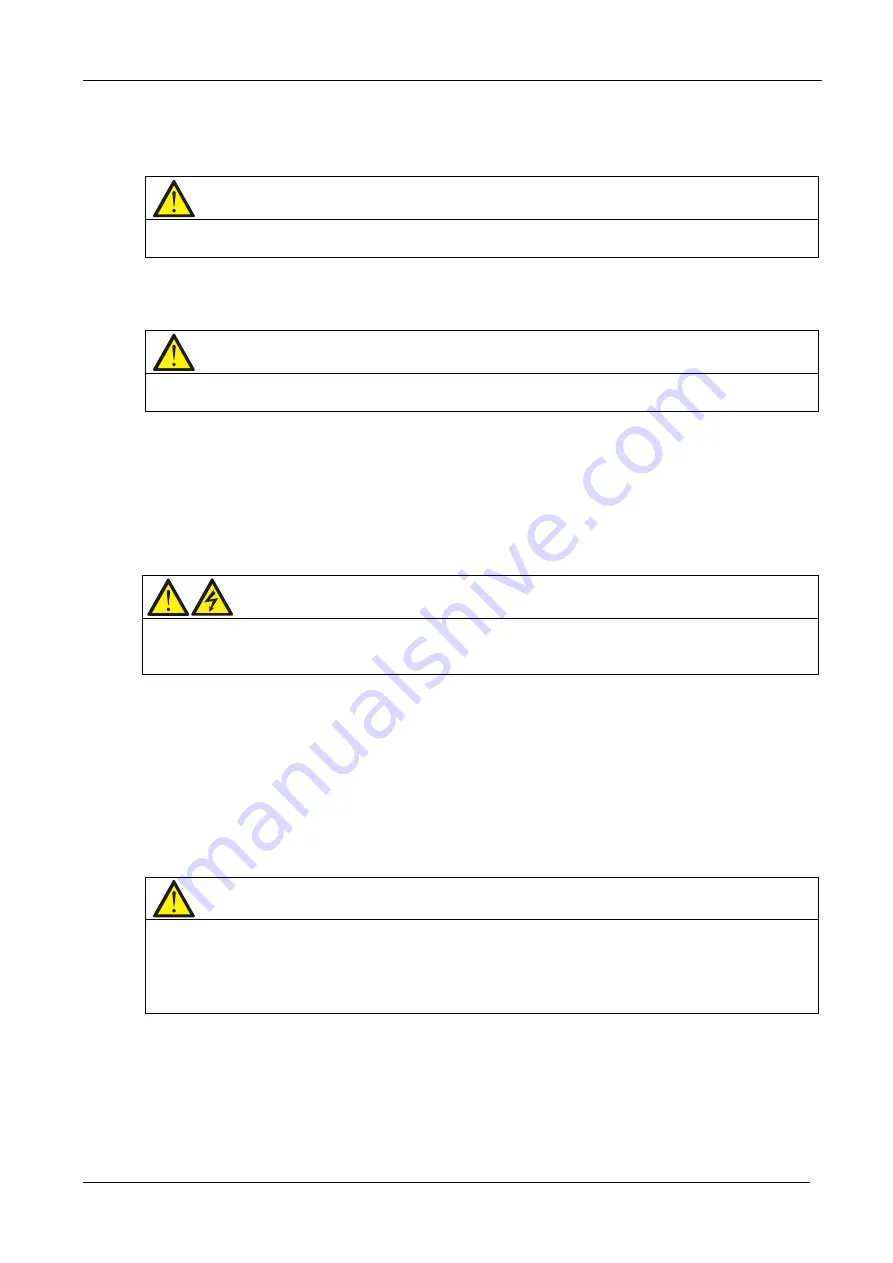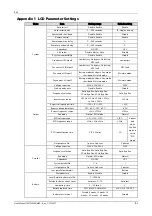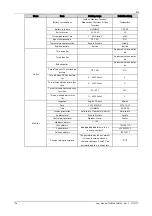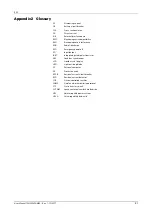
EXS
98
User Manual 10H52260UM60 - Rev. 1 - 10/2017
Chapter 9
Service And Maintenance
This section focuses on UPS maintenance, including fan maintenance, battery maintenance, UPS cleaning, UPS
state checks, and UPS function checks.
Note
Never attempt to carry out maintenance on the UPS while it is on line. Ensure that the UPS has been switched off completely
when performing any internal maintenance operations on it.
9.1
Fan Maintenance
Note
In order to avoid injury or damaging the device, wait until the fan is completely stationary before inserting fingers or any tools
into it.
The UPS fans are expected to run for 20,000 hours - 40,000 hours in continuous operation. The higher the ambient
temperature, the shorter the fan life.
During the UPS operation, it is important to check the condition of the fans at least once a year by confirming that
they blow air out of the ventilation holes on the rear panel.
9.2
Battery Maintenance
Warning
1. Never invert the battery connections as this could result in fires.
2. Never attempt to open batteries since they contain electrolyte which is potentially harmful to personnel. In the event of
accidental with electrolyte, wash the affected area with abundant, clean water, and seek medical assistance immediately.
The internal UPS battery module houses a sealed, lead-acid, maintenance-free battery. The battery life depends on
the ambient temperature, and charge and discharge times. High ambient temperatures and heavy discharge cycles
will shorten the battery life.
To preserve the battery life, it is necessary to:
Maintain the ambient temperature between 15°C and 25°C
Prevent small current discharge. DO NOT operate the UPS in battery mode for periods in excess of 24 hours.
Charge the battery for at least 12 hours if it hasn't been charged for three months while the ambient temperature
remains within the specified limits, or two months in the event of high ambient temperatures
Note
1. Check the battery connection screws at regular intervals, and re-tighten them if necessary.
2. Make sure that all the safety devices are present, in good condition and that they function correctly, and make sure that the
battery management parameter settings are correct.
3. Measure and log the ambient temperature in the battery room.
4. Check whether the battery terminals are damaged or hot, and check the condition of the cases and the covers.
If any of the batteries are found to be leaking, place them in a suitable container and dispose of them in accordance
with local regulations.
Lead-acid batteries are classified as hazardous waste material. The control of waste battery pollution is a nationally
important issue. Batteries must be stored, transported, used and disposed of in accordance with national and local
legal requirements and all other criteria applicable to the treatment of hazardous waste material and waste battery
pollution prevention.










































